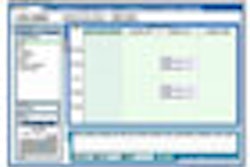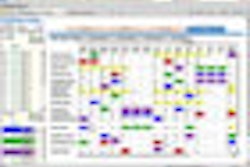CHICAGO - Implementing speech recognition (SR) for radiology reporting before a hospital decides to do so can be advantageous for radiology practices, Dr. John Floyd of Radiology Consultants of Iowa told attendees at an informatics scientific session the RSNA 2007 meeting.
This decision enables the radiologists who would be using speech recognition to select the system they want to use.
Radiology Consultants of Iowa in Cedar Rapids serves two urban hospitals, seven rural hospitals, and one imaging center. In 2005, with a 37% error rate for internally transcribed reports at one hospital, and a report turnaround time of three to 10 days at another, executives at both hospitals were discussing the purchase and adoption of speech recognition systems as a way to alleviate the problems.
Floyd said that he and his colleagues recognized the inevitable, and offered to take over all aspects of radiology report transcription, processing, and distribution. After evaluating different systems for six months, the practice purchased a single speech recognition system to be interfaced with five different RIS and three different PACS.
The benefits of having a single system were that the radiologists and transcriptionists/editors would only need to learn how to use one system, rather than several, and would only need to work with one database with respect to adding vocabulary and teaching the system to correct errors.
The radiologists planned to phase in usage in the first hospital to go live over a several-month period. "However, the speech recognition system launched abruptly in March 2006 when the transcriptionists learned what was being planned and walked off the job," Floyd said.
"We self-edit 97% of approximately 1,000 unstructured reports each day," Floyd said. He believes that the practice's ownership of the speech recognition system contributes to this high level of self-editing compliance.
Approximately 90% of the reports generated are free text, with less than 10% using standardized responses. Transcription editors are available from 6:00 a.m. to midnight, but are typically used only when a report is particularly complex or when data need to be entered with the report. "This can add an additional five to 10 minutes of time," Floyd explained.
Concern about high error rates of SR systems reported at RSNA 2006 convinced the practice to conduct an analysis of accuracy of SR-generated reports as compared to reports still being generated through traditional dictation at one rural hospital. The group compared 493 SR reports with 283 traditionally transcribed reports. The total number of errors for the SR reports was nine, compared to 13 for the traditionally transcribed reports, and 0.6% of the SR reports had a significant error, compared to 2% of the traditionally transcribed reports.
Although a direct correlation cannot be attributed to the implementation of speech recognition, Dr. Floyd said that during the remaining months of calendar year 2006, productivity increased 12% as it related to reporting. In the first eight months of 2007, productivity increased by 28%.
Floyd attributes financial ownership to making the project a success.
In the RSNA same session, a group from Santa Barbara Cottage Hospital reported that by integrating a dictation system using structured templates with its PACS, a reduction of 45% in full-time employee (FTE) transcription was achieved within 90 days from implementation in February 2006. Compared to the same months of the prior year, report turnaround time for STAT exams improved by 70% and overall turnaround time improved by 8%.
Complete integration of structured report templates with a PACS results in a system that automatically populates many aspects of a radiologist's report, explained Dr. Michael Trambert, lead radiologist for PACS re-engineering for Cottage Health System. This factor eliminated the need for transcriptionists to enter the data, thus reducing FTE time and significantly decreasing turnaround time for prioritized STAT exams.
Trambert estimates that based on FTE reduction, the system will achieve a return on investment (ROI) within two years.
By Cynthia Keen
AuntMinnie.com contributing writer
November 27, 2007
Related Reading
White noise may improve accuracy of SR system, November 27, 2007
Keys to a successful voice recognition implementation, July 12, 2007
ARRS study: Gender differences affect speech recognition accuracy, May 8, 2007
Speech recognition cuts report turnaround times, May 4, 2007
RIS-SR-PACS combo speeds radiology reporting, April 17, 2007
Copyright © 2007 AuntMinnie.com



















